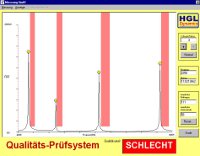Description
The properties of mechanical components can be determined with nondestructive testing. This is the principle of MAUL-THEETs Quality-Testing-Software. Based on vibration tests throughout the manufacturing process the labels ‘good’ or ‘bad’ can be given to a specific manufactured component.


